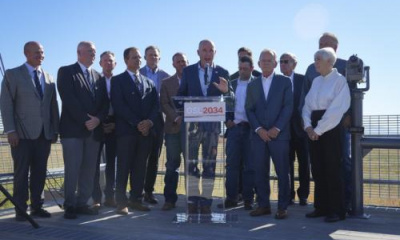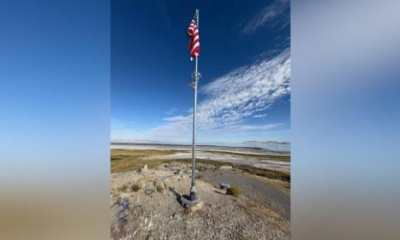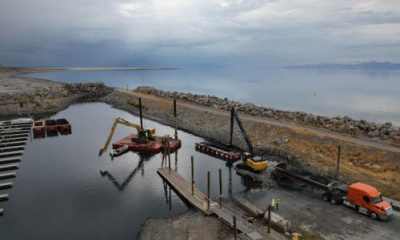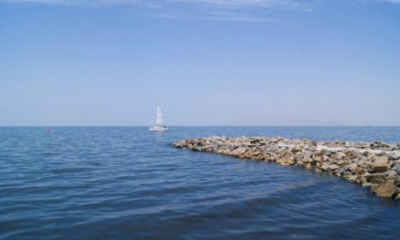The lake’s Glory days need not be a thing of the past. Its best days may be yet to come–and are perhaps already here.
Editor’s note: This story is part of a series of stories by the Great Salt Lake Collaborative that asks the question: Why save the Great Salt Lake? It explores what opportunities open up in agriculture, daily life, industry and recreation by restoring the lake — or are ultimately lost without it. To view all the coverage, go to our special report Why Save the Great Salt Lake.
In 1851, when Brigham Young led a contingent of Utah’s Mormon pioneers to the shore of the Great Salt Lake to celebrate the Fourth of July and unveil the state’s first territorial flag, the first toast of the evening was dedicated to the lake itself.
“To the Great Salt Lake,” the toast, as recorded by the Deseret News, began. “As she has hitherto been oblivious to the birthday of freedom and independence; may she this day be awakened to her sense of duty, and seek by her briny sympathies to preserve the Union, till she shall become a component part thereof, even if she has to pickle it.”
At the time, the capital was known as The City of the Great Salt Lake. It was shortened to Salt Lake City in 1868.
For the better part of the next century, the Great Salt Lake became a focal point of recreation, wonder, and even luxury. More than a half dozen resorts dotted her shoreline with the state’s top hotels, restaurants, concert halls and, yes, bars — to the great chagrin of the state’s religious immigrants. Luxury cruises glided across her glassy surface, offering all-night dances with live music, Victorian finery and the occasional forbidden romance.
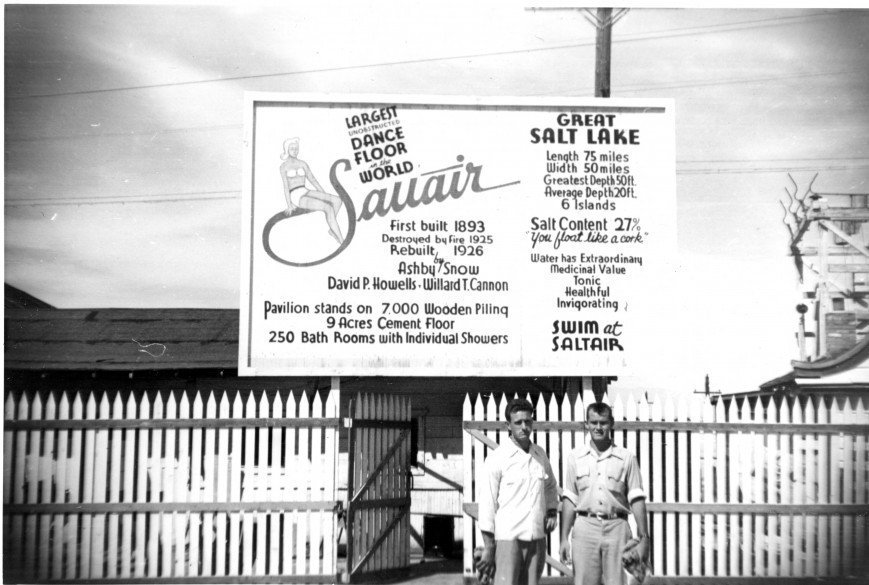
This photo from 1930 shows a promotional sign at Saltair. In 1893 the Church of Jesus Christ of Latter-day Saints built Saltair on the south shore of the Great Salt Lake, sixteen miles from downtown Salt Lake City, Utah. It was sold to a private individual in 1906. The main attraction was swimming in the Great Salt Lake. There was also a roller coaster, a merry-go-round, a ferris wheel, midway games, bicycle races, touring vaudeville companies, rodeos, bullfights, boat rides on the lake, firework display and even hot-air balloons. In 1925 it burned to the ground. A new pavilion was designed and built but it never regained its popularity. It closed for good in 1958. It was again destroyed by fire in November of 1970. Photo courtesy Uintah County Library Regional History Center.
The lake’s recreational heyday largely ended after World War II. Eventually, “the ‘Greatest Snow on Earth’” replaced the Great Salt Lake as Utah’s most renowned hydrological feature, according to University of Pennsylvania historian Jared Farmer.
But in the past two years, Dave Shearer, manager of the Great Salt Lake State Park and Marina, and an amateur historian of the lake, says he has sensed a change in the wind. The Covid-19 pandemic and all that has followed has awakened residents to a desire for a closer connection to nature, and the simultaneous water crisis has prompted calls to preserve and expand opportunities for locals to experience the state’s natural wonders.
“I have wonderful memories of sailing all night on the Great Salt Lake and the community, the friendships and just the beauty of the place,” Shearer says. “I remember when they had other activities on the beach — they used to have a go-cart track out here. Saltair used to be an amusement park.”
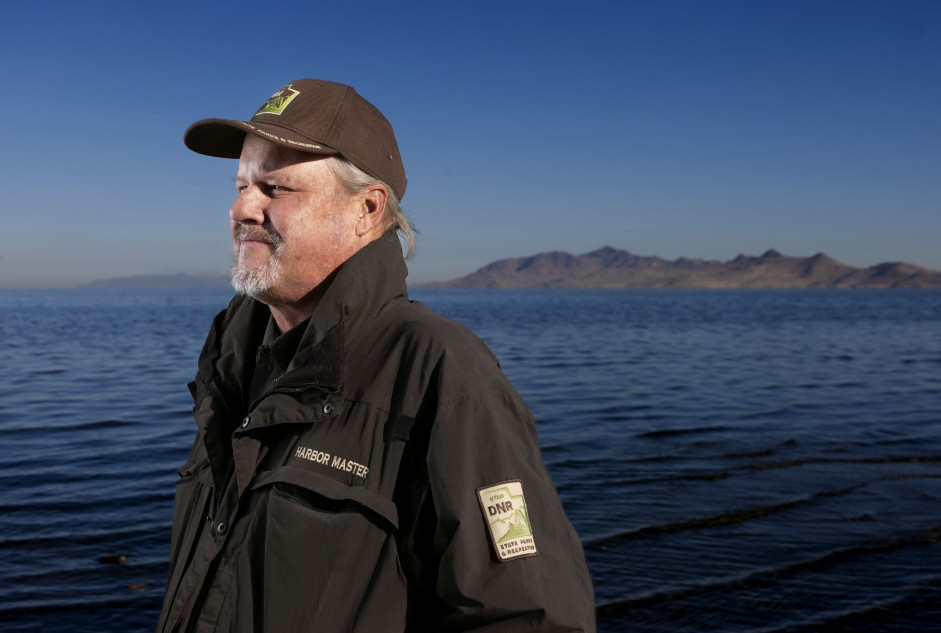
Great Salt Lake State Park Manager Dave Shearer stands on the shore of the lake on Friday, Oct. 13, 2023. “I have wonderful memories of sailing all night on the Great Salt Lake and the community, the friendships and just the beauty of the place,” Shearer says. “I remember when they had other activities on the beach — they used to have a go-cart track out here. Saltair used to be an amusement park.”
Some of those memories may be lost to history due to our modern understanding of the lake’s inherently volatile ecology. But Shearer and other experts agree — the Great Salt Lake is ready to make a comeback.
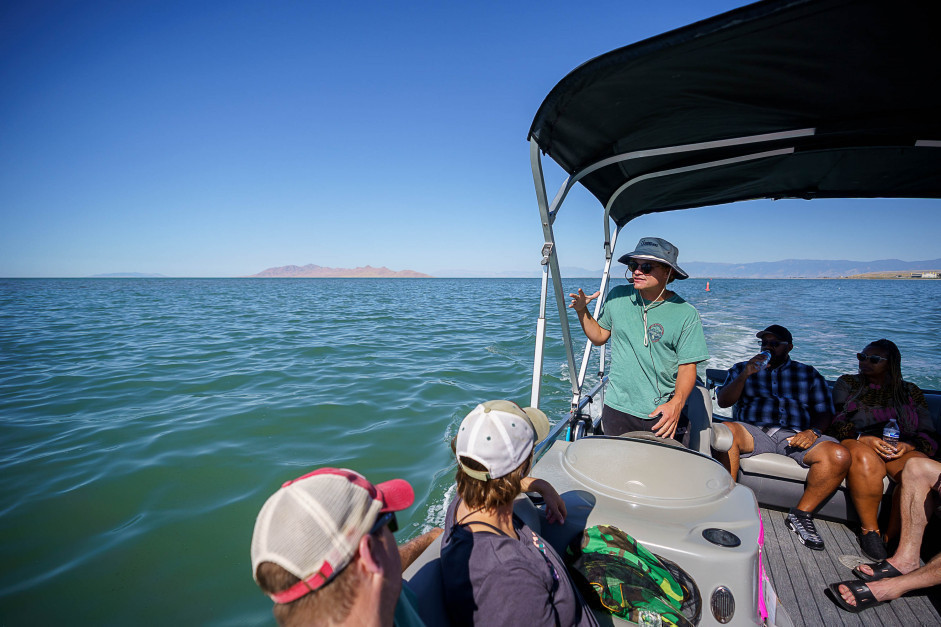
(Trent Nelson | The Salt Lake Tribune) Nathan Thacker pilots a sightseeing boat tour of the Great Salt Lake for Exclusive Excursions on Saturday, Sept. 16, 2023.
Return to the Lake
Part of the lake’s allure at the start of the 20th century was a widespread belief that its waters held unique, even magical properties that could promote health and potentially even cure disease. The lake’s healing powers were known long before the Mormon pioneers discovered them, notes Darren Parry, former chairman, Northwestern Band of the Shoshone Nation, whose creation story comes from the lake, he says.

(Trent Nelson | The Salt Lake Tribune) Former chairman of the Northwestern Band of the Shoshone Nation Darren Parry speaks at a "Rally to Save Our Great Salt Lake" at the Capitol building in Salt Lake City on Saturday, Jan. 14, 2023.
“As long as I can remember, the lake and the environment around the lake has been something that was sacred to us,” he said at a Great Salt Lake Collaborative event last year. “My grandmother always talked about the healing properties of the Great Salt Lake and how those waters healed.”
Back in its heyday, wealthy guests enjoyed multi-day Great Salt Lake cruises and even nature tours of the lake’s islands. For those who couldn’t afford a cruise, there were always fireworks, lemonade and baseball for the Fourth of July — tickets sold for a quarter each. The largest resort on the lake, Saltair, was modeled after Coney Island, with roller coasters and hot dogs and dance halls so large they had a band on each end, Shearer says.
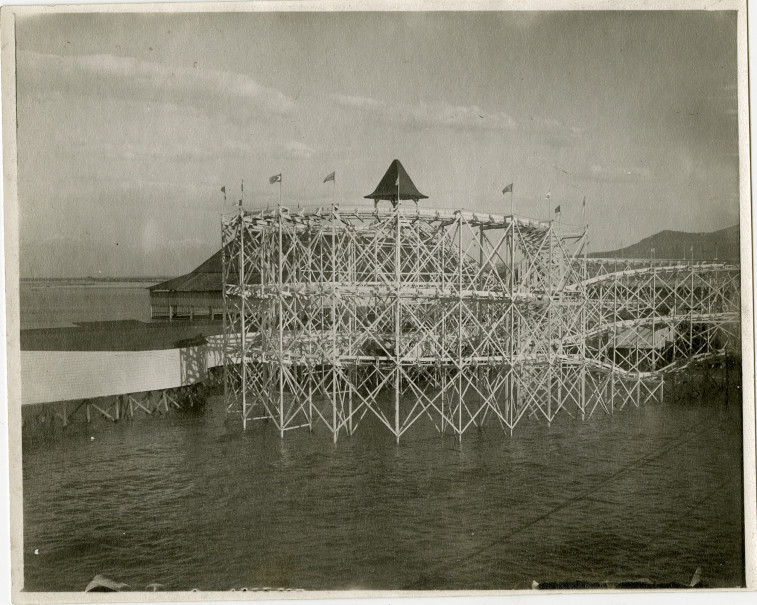
Photo showing the roller coaster extending over the Great Salt Lake at Saltair Resort, Utah, 1908. From the Edward P. Jennings Photograph Collection housed at Special Collections, J. Willard Marriott Library, The University of Utah. Reference URL.
But the post-war prosperity after World War II meant more Utahns could afford a car and take their summer recreation elsewhere, to see far-off natural wonders that by then seemed far more novel than the lake deemed by Brigham Young the “ninth wonder of the world,” Shearer says.
Although the roller coasters have since been decommissioned, Utahns today are discovering the lake’s briny water is still quite special.
“The water is so dense, you can come out here and sail doing five to seven knots of speed in perfect glass water, because it takes more wind to kick up waves,” Shearer says. “The other thing is the quietness. You don’t see the city out there. You see the islands, the wildlife, the birds, and you feel one with nature. And you don’t get that a lot of other places you go sailing where there’s more noise and human interaction. It really is a magical place.”
The lake may not command the center of recreational attention the way it used to, he says, but it has slowly come back — as have a variety of ways to enjoy the lake. The Great Salt Lake State Park visitor center offers tours of the lake’s natural and historic sites, campsites dot the shoreline and opportunities for kayaking, an entry-level activity for those interested in watersports, are abundant.
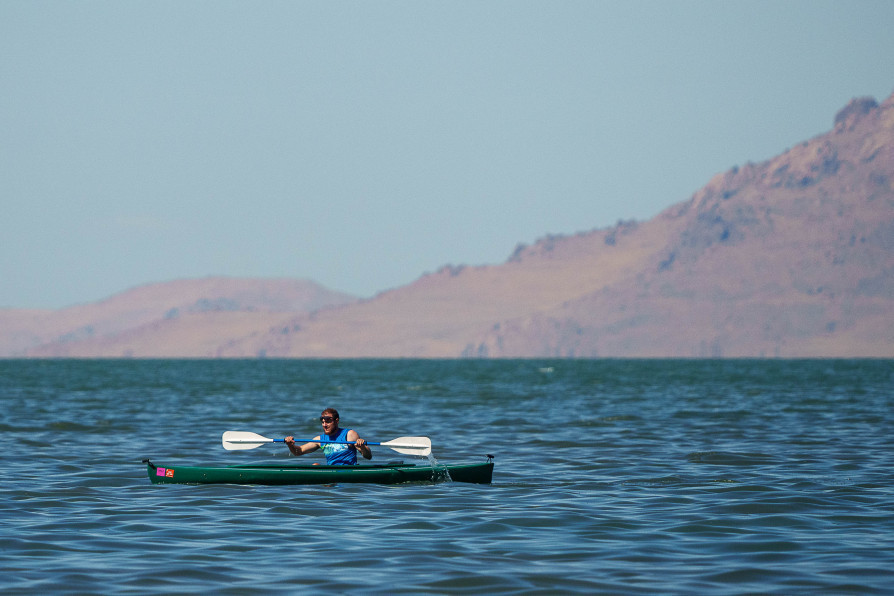
(Trent Nelson | The Salt Lake Tribune) A person kayaks the Great Salt Lake on Saturday, Sept. 16, 2023.
And Shearer believes there is growing potential for some of the recreational activities of days gone by to return to the lake. Roller coasters might be a bit of a stretch — relatively small changes in the amount of water in the lake cause dramatic shifts in shoreline, which makes siting permanent beachfront infrastructure rather difficult. Other attractions like sunset cruises with on-board dining might be more realistic, he says. In fact they may already be on their way back.
Tours offered by Exclusive Excursions have proven so popular since launching two years ago that the company had to buy a second tour boat to accommodate demand, Shearer says, and they’re talking about adding a third next year. For those looking to get out on the water without a boat of their own, the tour company also rents out paddle boards. And though it might not be exactly the same as the moonlight cruises of days gone by, Shearer says the state park has initiated “full moon walks” during the spring and summer months that have proven very popular.
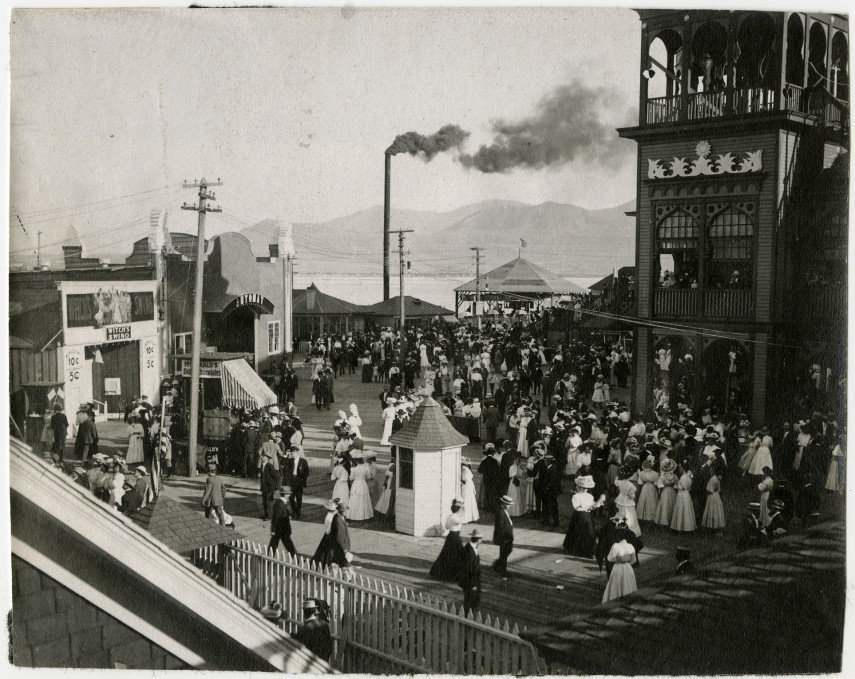
Photo showing crowds on the walkways at Saltair Resort, Utah, in 1908. From the Edward P. Jennings Photograph Collection housed at Special Collections, J. Willard Marriott Library, The University of Utah. Reference URL: https://collections.lib.utah.edu/ark:/87278/s6ft95gk
Still other opportunities wait in the wings, Shearer says. He’d love to see sailing lessons return in force to the lake, and he believes there is room for partnerships with more food vendors and the like. But on the whole, he says, he’s rather mystified by people who haven’t conceptualized the lake’s potential recreational appeal.
“When Covid hit, people thought [tourism] would calm down, but it was just the opposite,” he says. “I even get it here at the marina when the sailing community comes in. People ask ‘What are you doing now?’ And I say what are you talking about, we are as busy as ever.”
A Global Destination
As an avid bird watcher and a member of the Great Salt lake Audubon board, Jeanne Le Ber is no stranger to international travel. Le Ber has visited more than half of the United States and over a dozen foreign countries, most recently Iceland, all in pursuit of bird sightings. In total she says she has seen 1,574 species of birds.
Even so, Le Ber says Farmington Bay remains one of her favorite places for bird watching. One bird in particular — the American Avocet — keeps her attention. She calls it her “spark bird,” the bird that got her hooked on birding.
“It is a beautiful, delicate little bird, and we see large numbers of them coming through,” Le Ber says. “And they nest here, in the marshes around the Great Salt Lake.”
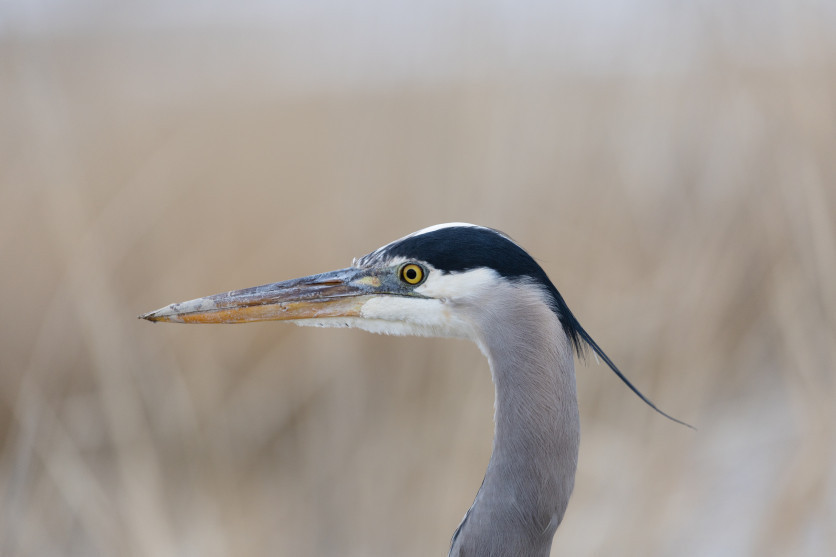
A great blue heron stands at the Great Salt Lake's Farmington Bay in Farmington on Sunday, Feb. 26, 2023. Ryan Sun, Deseret News.
Bird watching may sound to the uninitiated like a calming, meditative practice, but Le Ber and many others love it for the challenge. The goal, she explains, is to see and identify as many different species of birds as you can. Bird watchers keep count and love to talk about how many species they’ve added to their “life list.” And as any one birder’s life list gets longer, travel becomes a necessity in order to add increasingly exotic species.
The Great Salt Lake may not seem to those who live here like such an exotic destination, but for birdwatchers, it absolutely is. “Driving out on the causeway to Antelope Island will take us a couple of hours because we’re stopping to look at all the birds that are feeding,” Le Ber says. They might see her first love, the delicate, rusty-headed, white and black American Avocet. Or they might encounter heavy-bodied black-bellied plovers, a stilt-legged marbled godwit or even American white pelicans on their way to Gunnison Island.
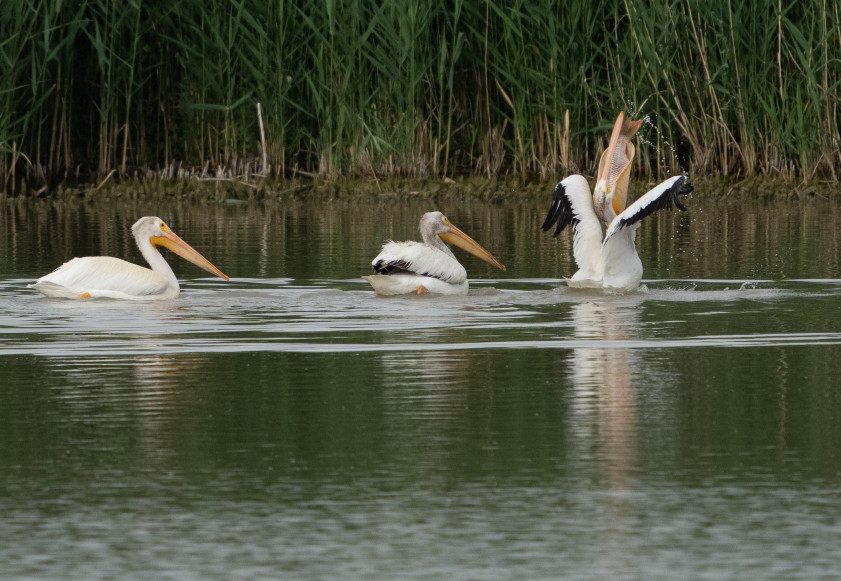
(Francisco Kjolseth | The Salt Lake Tribune) American white pelicans swallow whole large carp as they fish together in the Bear River Migratory Bird Refuge, a 74,000-acre nature reserve in the northern Great Salt Lake on Wednesday, June 23, 2021.
“Then we have all the neotropical migrants that come through,” Le Ber says. As the largest salt water lake in the Western Hemisphere, the Great Salt Lake provides an important rest stop and food source for birds that migrate over a thousand miles from South America with the changing seasons. “I know people who have seen over 340 species of birds in Utah. I have 320.”
That makes the Great Salt Lake a must-see for bird watchers from around the world who hope to expand their life lists. Le Ber says she was co-leader for an American Birding Association field trip to Antelope Island, where they showed noted birder Pete Dunne from Cape May, New Jersey, a chukar he was able to add to his life list.
All this travel represents a potential boon to the local economy, and one that need not come with a great deal of increased pollution, Le Ber says. Bird watchers eat in local restaurants and stay in local hotels, and even hire local birdwatching experts to help locate particular birds. A 2012 economic report estimated that ecotourism, including bird watching and waterfowl hunting, generates $113.5 million in recreational spending in Utah each year.
Recreation Reawakening
The water crisis of recent years has come with challenges for recreational opportunities on the lake. Low water levels have forced the closure of the Antelope Island Marina boat ramp, which has yet to reopen to small and medium-sized sailboats. Likewise the Great Salt Lake State Park Marina and boat ramp closed to most boats in 2022, though smaller boats were allowed to re-enter the marina this summer and several boats have since successfully launched into the lake, according to the Utah Division of State Parks.
But like all crises, it has also come with opportunities. As talk of saving the Great Salt Lake has moved to center stage, so too have new ideas for raising its profile with tourists.
Farmer, the historian, proposed multiple ideas in his essay Restoring Greatness to Utah: More land art like the Spiral Jetty dotted on the west and north sides of the lake to connect the Golden Spike National Historical Park to the Salt Flats. Improved state parks with history exhibit halls, classrooms for school groups, spaces for artists-in-residence. A new Great Salt Lake Marathon to run from This is the Place to the shores of the lake.
And a national designation for the lake that would require a rebranding of Utah’s Mighty 5 national parks into a Spectacular 6.
Utah lawmakers have something similar in mind. This year they approved spending $15 million on an IMAX theater and movie at the Antelope Island State Park Visitor Center, which is also slated to quadruple in size to accommodate a projected 2 million annual visitors. “We want people to fall in love with the lake again the way they do with Zion National Park,” Gov. Spencer Cox said recently.
And should the idea of ecotourism inspiring well-paid jobs sound too far-fetched, know that this, too, has long been a part of the lake’s history. Like Le Ber, Great Salt Lake Institute director Bonnie Baxter is a Utah transplant. She grew up boating around the back-water islands of North Carolina and always felt an affinity for water and natural waterways, ultimately landing at Westminster College when she proposed a course of study on the DNA of Great Salt Lake microbes. Once there, she began to offer interactive classes when she realized the lake presented a generation of Utah students with the opportunity to discover science in a landscape they already felt connected to. Field trips involving kayaks and paddleboards have helped students who might otherwise turn away from education realize the value of their studies in the real world, Baxter says.
That education could reveal new opportunities to feed the world through brine shrimp production, aquaculture or innovations yet to be discovered. It could redesign our cities and find new ways to support local agriculture. Saving the Great Salt lake may, in fact, be the key to saving not just the lives but also the souls of all those who live alongside it.
The Great Salt Lake, it seems, has long been aware of the duty Brigham Young’s settlers sought to awaken in 1851 — at every turn it has something to offer, if only one knows where to look. The question for our generation will be whether we are ready to awaken our duty to her, to preserve her. And Baxter believes the rising generation is ready.
“What has happened with humans during this time is I am getting people emailing me and calling me and sending me handwritten letters, saying the lake is important to them and they didn’t realize how important it was until it was threatened,” Baxter says. “So I think when it comes back, it will come back full of life. People are ready to reconnect with it, because they have had this period of missing it.”


